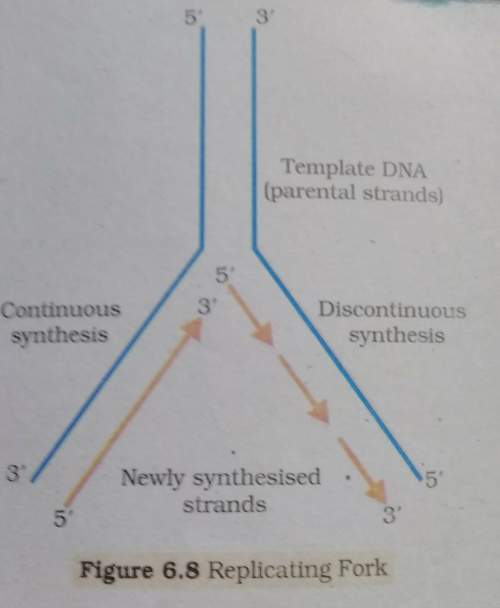
Biology, 28.01.2022 06:40 Hockeypro1127
1.) The organisms that became index fossils were found in very large quantities, meaning these organisms we're at one time
2.) What rock made of sediment that become cemented together
3.) What small fossil is only visible with a microscope
4.) Organisms that became index fossils were , holding up well over a long period of time
5.) Most rock that contains fossils were formed in the
6.) Fossils that help determine the age of fossils and rock found in the same sedimentary lager are .

Answers: 1


Other questions on the subject: Biology

Biology, 22.06.2019 03:00, longoriafaithe09
In 1959, doctors began using the powerful antibiotic methicillin to treat infections of staphylococcus aureus, but within two years, methicillin-resistant strains of s. aureus (mrsa) appeared. how did the resistant strains of s. aureus emerge? in 1959, doctors began using the powerful antibiotic methicillin to treat infections of staphylococcus aureus, but within two years, methicillin-resistant strains of s. aureus (mrsa) appeared. how did the resistant strains of s. aureus emerge? staphylococcus aureus bacteria that were able to synthesize cell walls using a protein that was not affected by methicillin survived the methicillin treatments and reproduced at higher rates than did other individuals. over time, these resistant individuals became increasingly common. in response to treatment of staphylococcus aureus infections with methicillin, some bacteria began to synthesize cell walls using a protein that was not affected by methicillin. these bacteria survived the methicillin treatments and reproduced at higher rates than did other individuals. over time, these resistant individuals became increasingly common. in response to treatment of staphylococcus aureus infections with methicillin, bacterial populations gradually began to synthesize cell walls using a protein that was not affected by methicillin.
Answers: 3

Biology, 22.06.2019 05:40, Michcardwell8570
Glycogen is an energy-storage molecule in humans. a hormone that is called insulin controls the storage of glycogen in the liver. insulin is made up of amino acids.
Answers: 2


Biology, 22.06.2019 10:30, nonjabulomabaso7423
Subduction zones form when an oceanic plate collides with another oceanic plate or continental plate. the continental crust is lighter and less dense than oceanic crust. continental crust's density is approximately 2.7 grams per cubic centimeter. oceanic crust is thinner and the average density is about 3.3 cubic centimeters. when the two crustal plates converge the oceanic plate always bends and subducts beneath a continental plate. once the oceanic crust subjects, the rocks are subjected to changes in heat and pressure. because of this, we would expect to find rocks in the area of a subduction. a) clastic b) igneous c) metamorphic d) sedimentary
Answers: 2
You know the right answer?
1.) The organisms that became index fossils were found in very large quantities, meaning these organ...
Questions in other subjects:

Mathematics, 11.02.2020 00:49





History, 11.02.2020 00:49



Mathematics, 11.02.2020 00:49




